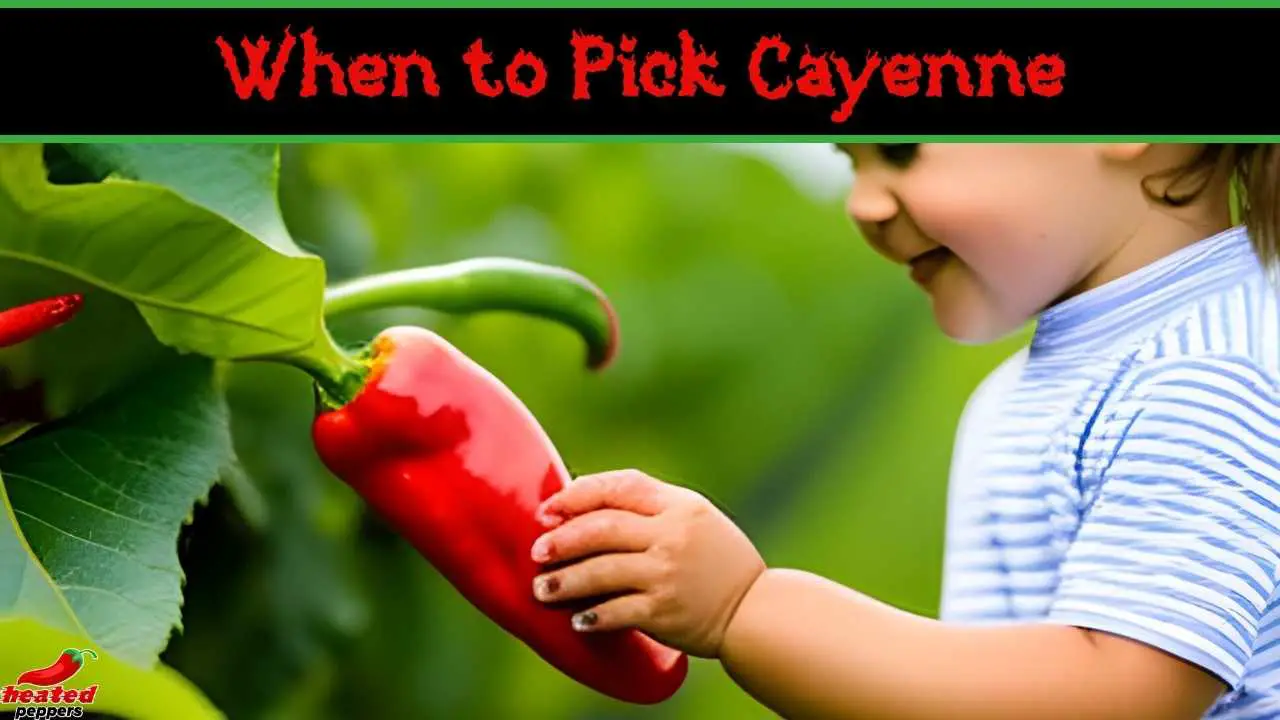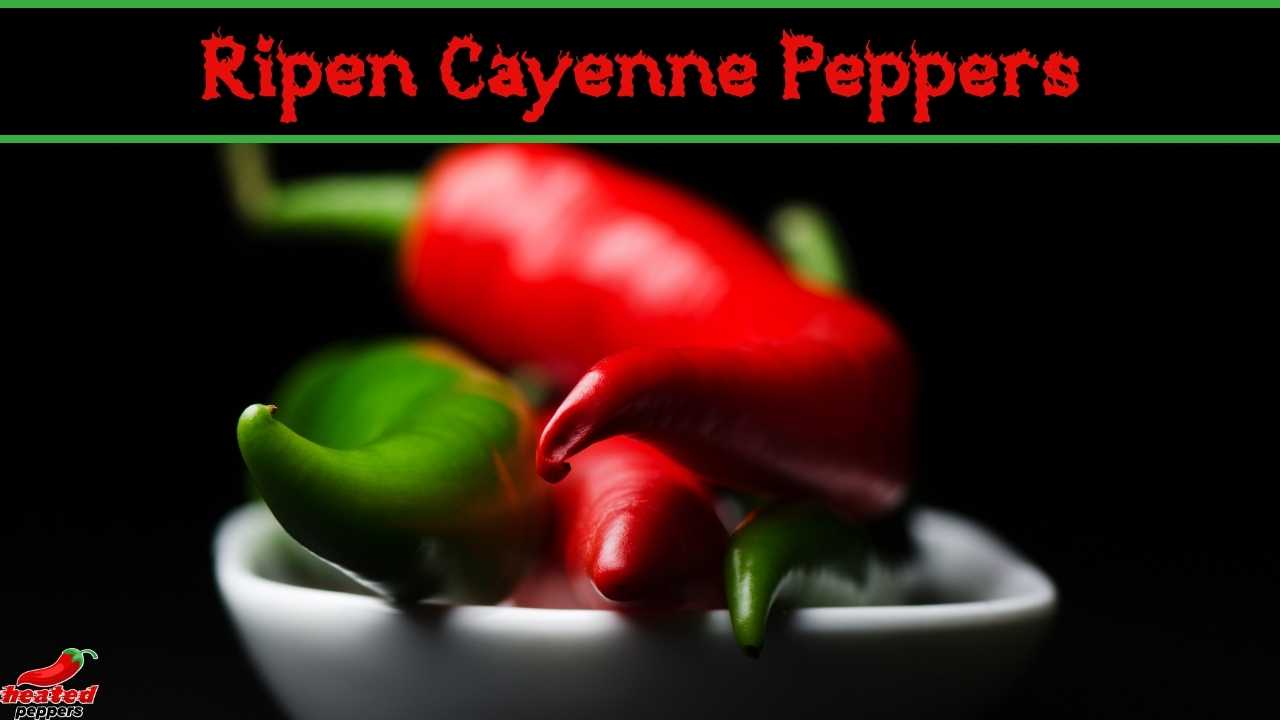Cayenne pepper, like other ingredients, has a shelf life that is typically longer than the manufacturer’s “expiration date” label AND it can be extended further with proper storage.
In this article, we’ll explore the shelf life of cayenne pepper in various forms and provide some helpful tips to keep it fresh for as long as possible.
Curious to know more? Let’s get started!

Table of Contents
What is an Expiration Date?
An expiration date is like a friendly reminder from the manufacturer, letting you know the last day a product is guaranteed to be at its peak quality and freshness.
It’s important to pay attention to these dates, as consuming expired products can lead to some not-so-pleasant outcomes, like food poisoning, bacterial infections, or allergic reactions. No one wants that, right?
Now, let’s talk about cayenne pepper and how long it lasts.
How Long Does Cayenne Pepper Last?
- Fresh Cayenne Pepper – A fresh cayenne pepper typically lasts about 1-2 weeks when properly stored in the refrigerator.
- Canned Cayenne Pepper – Canned cayenne pepper has a longer shelf life, usually lasting between 2-3 years unopened. Once opened, it’s best to use it within a week.
- Frozen Cayenne Pepper – Frozen cayenne pepper can last up to a year if stored correctly in an airtight container.
- Pickled Cayenne Pepper – Pickled cayenne pepper has a shelf life of around 1-2 years unopened. Once opened, it should be consumed within 2-3 months.
- Dried Cayenne Pepper (Powder, Flakes, etc) – Dried cayenne pepper products can last up to 2-3 years when stored properly.
How Long Does Cayenne Pepper Last After Its Expiration Date?
- Fresh Cayenne Pepper – Fresh cayenne pepper may still be okay for a few days after its expiration date, but it’s best to use your judgment based on its appearance and smell.
- Canned Cayenne Pepper – Canned cayenne pepper can sometimes last up to a year past its expiration date, but it’s crucial to check for any signs of spoilage.
- Frozen Cayenne Pepper – Frozen cayenne pepper can last a few months past its expiration date, as long as it’s been stored correctly.
- Pickled Cayenne Pepper – Pickled cayenne pepper might be good for a few months past its expiration date. Check for changes in color, texture, and smell.
- Dried Cayenne Pepper (Powder, Flakes, etc) -Dried cayenne pepper products may last up to a year past their expiration date, but it’s important to look for signs of spoilage.
Does Cayenne Pepper Lose Potency?
Cayenne pepper can gradually lose potency over time, but it is unlikely to completely lose all of its spiciness.
The rate of potency loss can vary depending on factors such as storage conditions and the initial quality of the pepper.
Exposure to air, moisture, light, and heat can accelerate the degradation process. Over an extended period, the capsaicin content, which provides the heat in cayenne pepper, may decrease, resulting in a milder flavor profile.
However, even with reduced potency, cayenne pepper will still retain some level of spiciness.
Cayenne Pepper Shelf Life Table
| Form | Shelf Life | Shelf Life After Expiration Date |
|---|---|---|
| Fresh Cayenne Pepper | 1-2 weeks (refrigerated) | A few days (use judgment) |
| Canned Cayenne Pepper | 2-3 years (unopened) | Up to 1 year (check for spoilage) |
| 1 week (opened) | ||
| Frozen Cayenne Pepper | 1 year (in airtight container) | A few months (if stored correctly) |
| Pickled Cayenne Pepper | 1-2 years (unopened) | A few months (check for spoilage) |
| 2-3 months (opened) | ||
| Dried Cayenne Pepper | ||
| (Powder, Flakes, etc) | 2-3 years (stored properly) | Up to 1 year (check for spoilage) |
How to Make Cayenne Pepper Last Longer?
Proper storage is key to extending the shelf life of cayenne pepper and preserving its flavor and potency. By following these guidelines, you can ensure that your cayenne pepper remains fresh and ready to add a spicy kick to your favorite dishes:
How to Properly Store Cayenne Pepper
Keep it in a cool, dark, and dry place
To maintain the flavor and potency of cayenne pepper, it’s crucial to store it in a cool, dark, and dry location. A pantry or cupboard away from direct sunlight and heat sources, such as stovetops and ovens, is an ideal choice.
Store in an airtight container
Using an airtight container will prevent exposure to air and moisture, both of which can degrade the quality of cayenne pepper. This type of storage will also help retain the spice’s flavor and potency for a longer period.
Keep away from strong odors
Cayenne pepper can absorb surrounding smells, which may affect its taste. To avoid this, store it separately from pungent items like garlic and onions. Ideally, designate a specific area in your pantry or cupboard for storing spices.
Is it Better to Store Cayenne in Glass or Plastic?
Glass containers are the preferred option for long-term storage of cayenne pepper. They do not retain odors or flavors and are impermeable to air and moisture, ensuring the spice remains fresh and potent.
Although acceptable for short-term storage, plastic containers may become discolored or absorb odors over time. If you choose to use plastic, opt for a high-quality, airtight container to minimize these risks.
Should I Refrigerate Cayenne Pepper?
Cayenne pepper is shelf-stable, meaning refrigeration is typically not required. Proper storage in a cool, dark, and dry place is usually sufficient to maintain its quality.
However, if you live in an area with high humidity or extreme temperatures, refrigeration may be helpful in preserving cayenne pepper’s freshness.
Be sure to store it in an airtight container to avoid moisture condensation, which can lead to clumping or mold growth.
Will Freezing Cayenne Pepper Keep it Fresh?
While freezing can preserve cayenne pepper, it may also result in clumping due to moisture exposure. Additionally, it can be challenging to measure or use the spice directly from the freezer.
Should You Buy Fresh Or Ground Cayenne Pepper?
| Type | Pros | Cons |
|---|---|---|
| Fresh Cayenne Pepper | Vibrant flavor and heat, excellent for dishes needing fresh spice | Shorter shelf life, requires refrigeration |
| Ground Cayenne Pepper | Convenient for regular use, easier to measure and store, longer shelf life | May lack the bright, fresh flavor of fresh cayenne pepper |
When deciding whether to buy fresh or ground cayenne pepper, consider your personal preferences, intended usage, and storage capabilities.
Fresh cayenne pepper provides a vibrant flavor and heat, making it an excellent choice for dishes that benefit from a fresh, spicy kick.
However, fresh peppers have a shorter shelf life and require refrigeration to maintain their quality.
Ground cayenne pepper, on the other hand, is more convenient for regular use, as it’s easier to measure and store.
The powdered form has a longer shelf life and retains its potency over time. However, it may lack the bright, fresh flavor that comes from using fresh cayenne pepper.
Ultimately, the choice between fresh and ground cayenne pepper depends on your cooking habits, taste preferences, and storage space.
You may even decide to keep both on hand for different culinary applications.
How to Tell If Cayenne Pepper is Bad?
Knowing how to identify spoiled cayenne pepper is essential for maintaining food safety and ensuring the best possible taste in your meals.
Here are a few ways to tell if cayenne pepper is starting to go bad:
- Wrinkling/Shriveling/Shrink Skin – Cayenne pepper that is starting to spoil may display a wrinkled, shriveled, or shrunken appearance. This can indicate that the spice has lost its moisture content and is no longer at its peak freshness.
- Soft Surface Spots – Soft spots on the surface of cayenne pepper can be a sign of spoilage or mold growth. If you notice these spots, it’s best to discard the affected pepper to prevent potential health issues.
- Brown/Dark Spots – Brown or dark spots on cayenne pepper can be another indicator of spoilage. These spots may signify mold growth, rot, or oxidation, all of which can compromise the quality and safety of the spice.
- Loss of Spiciness – A loss of spiciness in cayenne pepper may signal that it has become stale or degraded. While it might still be safe to use, the diminished flavor could impact your dishes.
Can Bacteria/Mold Grow on Cayenne Pepper?
Bacteria and mold can potentially grow on cayenne pepper, as they can grow on almost any type of organic material if the conditions are favorable for their growth.
Cayenne pepper has a low moisture content and a high acidity level, which makes it less favorable for bacterial and mold growth.
However, if the cayenne pepper is not stored properly, exposed to moisture or kept in warm and humid conditions, it can become a suitable environment for bacterial and mold growth.
Can I Use “Expired” Cayenne Pepper?
Using expired cayenne pepper depends on its condition.
If it shows no signs of spoilage and has been stored properly, it may still be safe to use. However, keep in mind that the potency and flavor of the spice may have diminished over time.
What Will Happen if I Eat Cayenne Pepper That’s Gone Bad?
Eating spoiled cayenne pepper can lead to health issues like food poisoning, bacterial infections, or allergic reactions.
Symptoms may include nausea, vomiting, diarrhea, or fever. It’s always better to err on the side of caution and avoid consuming anything that seems off or displays signs of spoilage.
What to Do With Expired Cayenne Pepper?
If you’re sure that your cayenne pepper is past its prime, it’s best to discard it to avoid potential health risks.
However, if it still seems to be in good condition but has lost some of its potency, you can use it in recipes where the loss of spiciness won’t be too noticeable.
For example, incorporate it into stews, soups, or sauces where other flavors can help mask the diminished heat.
Conclusion | Does Cayenne Pepper Expire?
In conclusion, cayenne pepper does expire, but with proper storage, you can prolong its life and enjoy its flavorful heat. Remember to watch for signs of spoilage and always trust your instincts.





